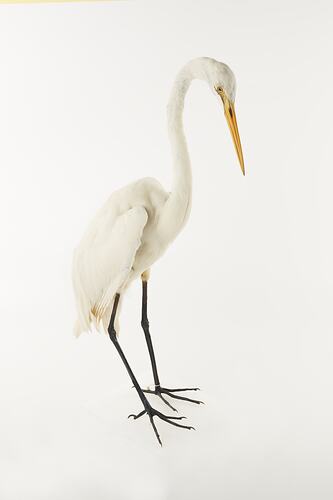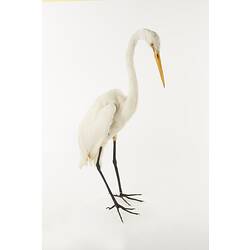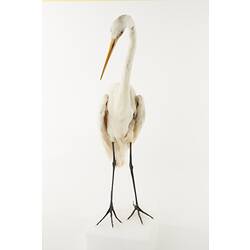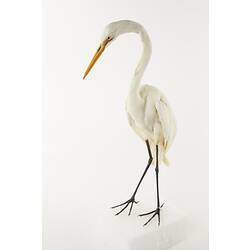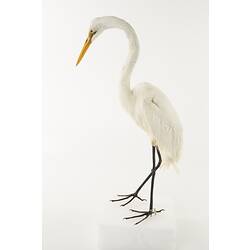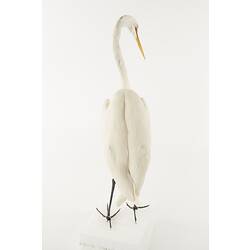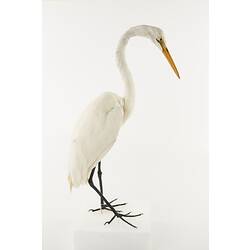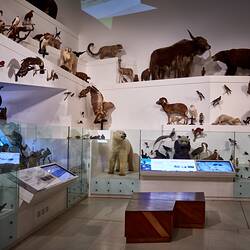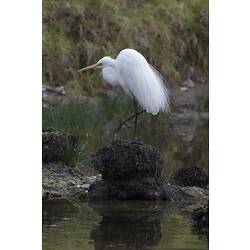Summary
The Great Egret is a large, white heron species that occurs around the world. There are four subspecies, one of which, The Eastern Great Egret, occurs along the coasts of Australia and New Zealand. Egrets feed along shallow, slow-moving waterways, using their large bills to stab at prey, including fish, frogs, and invertebrates. When breeding, Great Egrets form colonies and the color of their bills change from yellow to black, the facial skin becomes green and birds grow long flowing feathers on their necks.
Populations of Great Egrets worldwide declined dramatically in the late 1800s as they were collected so their breeding feathers could be used in the millinary industry. Populations largely recovered during the 1900s when the species was protected from hunting for plumage.
This specimen came from Victoria. The date of collection is unknown but as the bill is yellow, it would have been collected during the non-breeding season.
Specimen Details
-
Taxon Name
-
Preferred Common name
Great Egret
-
Number Of Specimens
1
-
Sex
Unknown
-
Specimen Nature
Nature: Mount, Form: Dry
-
Collected By
Unknown
-
Category
-
Scientific Group
-
Discipline
-
Collecting Areas
-
Type of Item
Taxonomy
-
Kingdom
-
Phylum
-
Subphylum
-
Class
-
Order
-
Family
-
Genus
-
Species Name
alba
-
Subspecies
modesta
